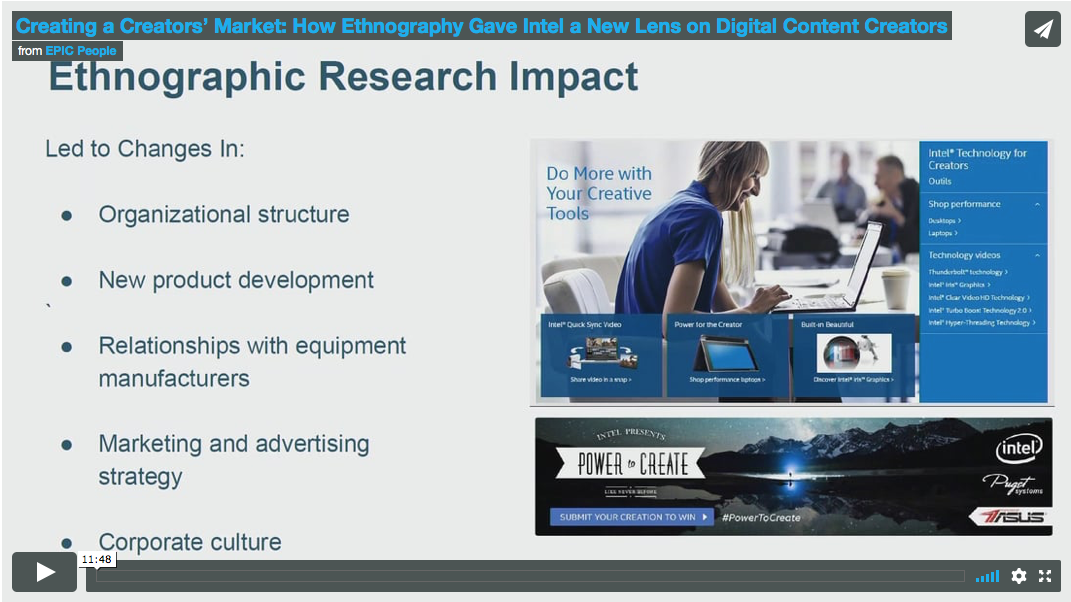This case study demonstrates the value of ethnography and qualitative approaches in Latin American industry,...


This case study demonstrates the value of ethnography and qualitative approaches in Latin American industry,...

This case demonstrates how ongoing ethnographic research from within a corporation led to the re-segmentation of a market. The first part of the case focuses on how a team of social science researchers at a major technology company, Intel, drew on past research studies to develop a point-of-view...

As a team of researchers was asked by a French home-improvement retailer to redefine their strategy, they designed and carried out an ethnographic and quantitative research to identify new business opportunities. But no sooner had they set foot in field, they were struck not only by the richness...

Walking a Different Path The path of American anthropology is becoming ever more diverse. Under the academic umbrella of Anthropology the world has been explored, analyzed, reflected on, and then determined to be wanting of more exploration. The Indiana Jones stereotype of the archaeologist or...

In many companies, numbers equal authority. Quantitative data is often viewed as more definitive than qualitative data, while its shortcomings are overlooked. Many of us have worked to marry quantitative with qualitative methods inside organizations to present a fuller view of the people for whom...

Because market segmentations are a familiar managerial artifact, it is easy to overlook the assumptions teams make as they construct these representations. Segmentations have become entrenched within companies because they are useful in navigating the complexity of the real world, but this...